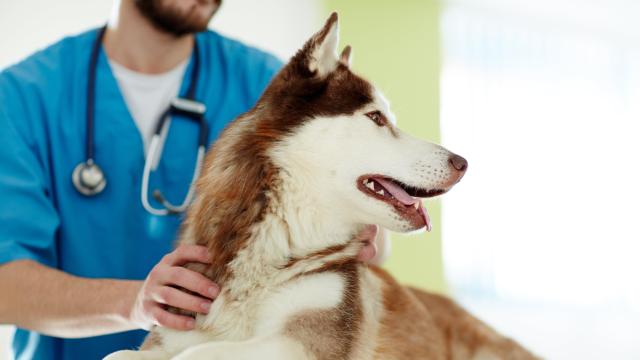The vet isn’t particularly fun for most dogs — they expect to be poked, prodded, and are often separated from you. Some dogs are anxious and scared about going to the vet, while others get protective and reactive. My dog looks for any possible escape the moment we enter the office and would dig through the brick wall if he could.
Our pets’ stress can feel hard to manage, but with some effort, there’s hope for vet visits to not be the worst experiences of their lives. Here are a few ways to train your dog to like the vet (or at least make it less miserable for all involved).
Go on short vet visits for ‘fun’
One of the most commonly recommended strategies for changing your dog’s mind about visiting the vet is, essentially, a form of exposure therapy. Take your dog to the vet’s office when they are well and don’t need an actual exam, and make it a fun, treat-filled experience.
The key is to start small: stop in for a few minutes at a time. Reward your dog for being either calm or excited depending on what you’re trying to train, and then leave. Build up to sitting in the waiting room for a few minutes, followed by sitting in an exam room when one is available. Give lots of treats. Let staff give treats too. Don’t stay past your dog’s tolerance, even if it only lasts for a minute or two.
Over time, you can walk your dog through the routine of an actual visit, from entering the building to being weighed to hanging out in an exam room to checking out and leaving. Veterinary staff is most likely used to this process and willing to accommodate, but you may want to call ahead and ask when a good (calmer, quieter) time would be to stop by.
Retraining your dog to see the vet as a happy, safe place will take time and effort, but it may well be worthwhile if you can reduce the stress for you, them, and the vet staff during real visits.
Get your dog used to being handled
Dogs obviously have to be touched a lot during most vet visits, and if your dog has rigid physical boundaries, they’re likely to get stressed, scared, or angry when being handled. Practice similar forms of touch at home: looking in their ears, lifting their lips, massaging their paws, and handling their belly and tail. Again, use treats, especially when they relax while being touched. Your dog is likely to be more receptive to you handling them than a vet or tech, but at least it familiarizes them with certain types of touch. Having your dog’s nails clipped at a groomer is another lower-stakes way to desensitize them to being handled.
Capitalise on your dog’s training
As with handling, certain basic behaviours can prove to be helpful at a vet visit, and they offer a chance to reward your dog for following commands. If your pup doesn’t already know sit, stand, and touch, start there.
Communicate with your vet and advocate for your dog
One possible issue is that your dog is encountering unfamiliar situations at the vet, such as being muzzled, restrained, or crated. Talk to your vet and vet techs about their process and what you could practice at home to make these things less scary. In some cases, it may be better to let your vet handle your pup or remove them to a different room, so it’s best to talk through your options.
Another way to advocate for your dog is to make the visit work for you. For example, if you notice that your dog gets especially stressed around other pets in the waiting room, ask to move to an exam room as quickly as possible.
You should also communicate about your dog’s anxiety in general and observe how your dog responds to your vet. Some vets may be more patient or better equipped to manage anxiety. And don’t be afraid to switch vets if you feel like you aren’t heard or their relationship isn’t improving over time.
Your dog will recognise your own anxiety
While your sense of calm doesn’t necessarily translate to feelings of calm for your dog, your anxiety sure does. Try to stay as relaxed and positive.
If vet visits remain a truly impossible experience, you could also explore at-home services — though some dogs may find this even more challenging and become defensive and reactive.

Leave a Reply
You must be logged in to post a comment.